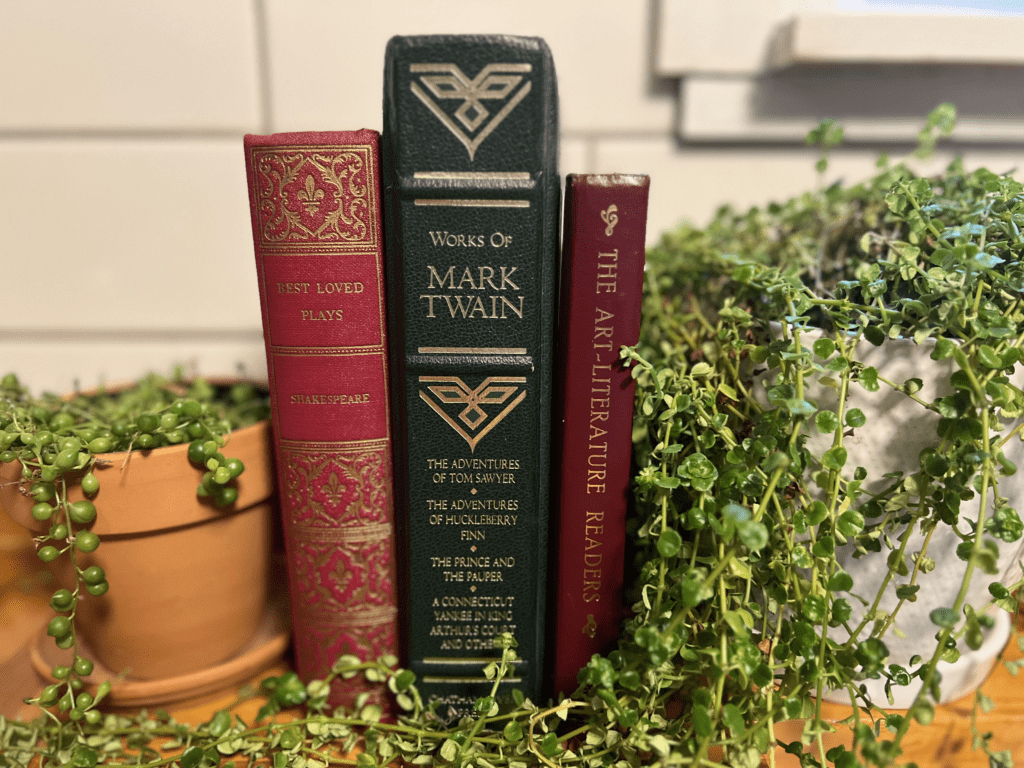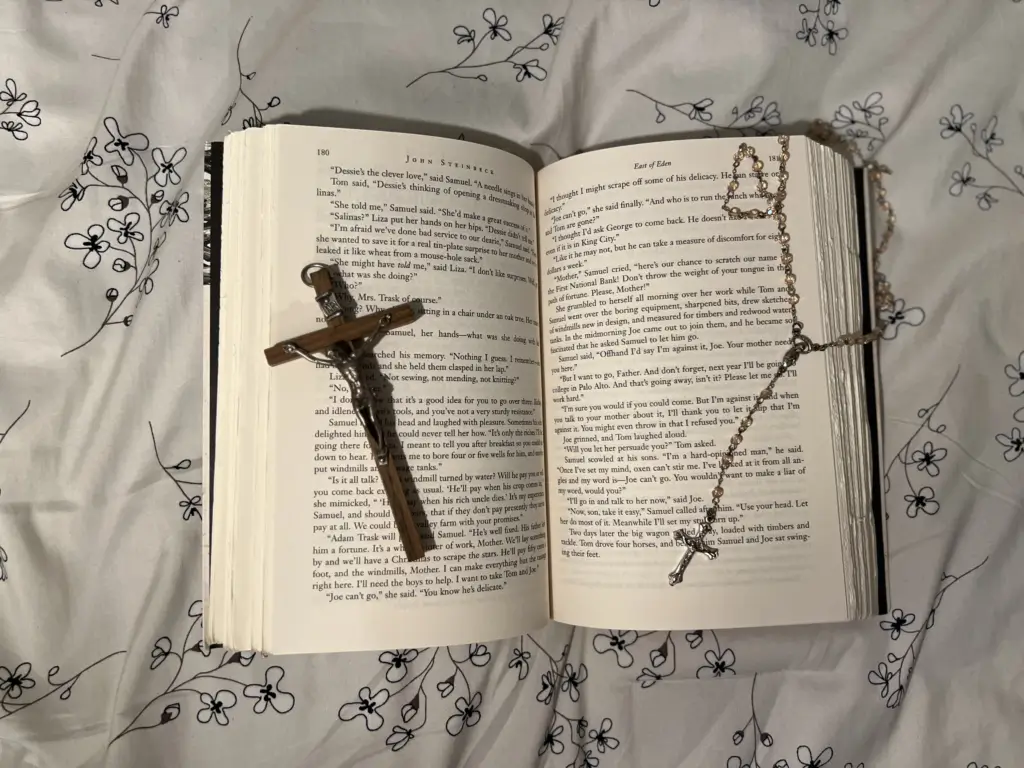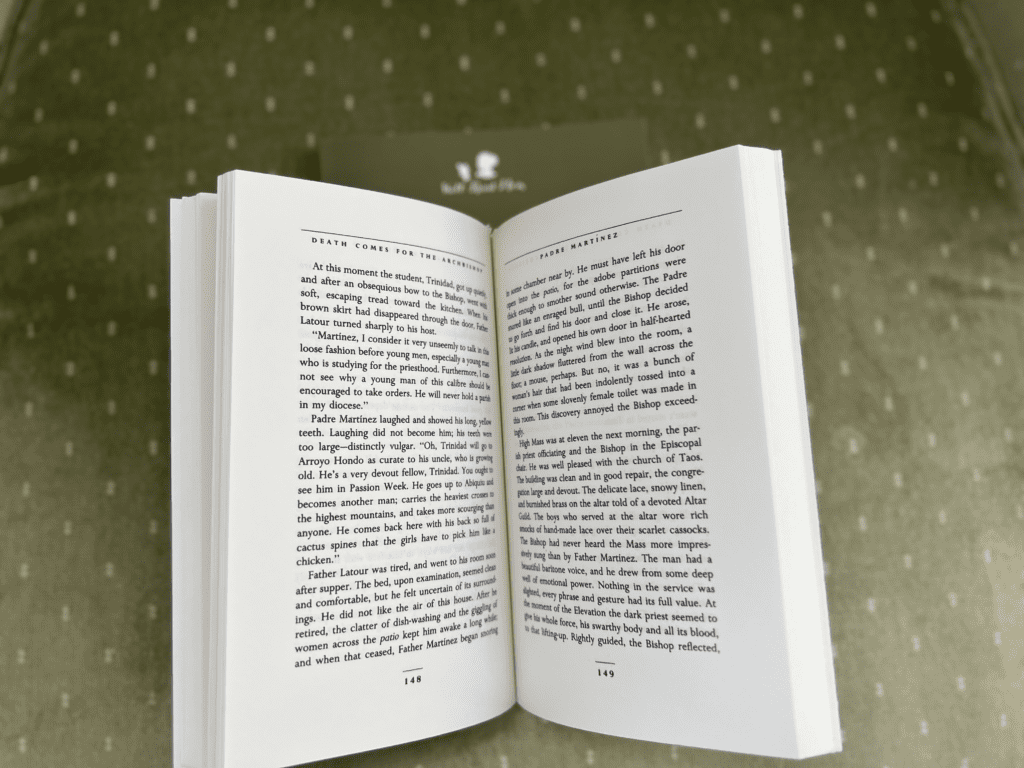Posts Tagged ‘reading’
Wonder Makes Us More Human—and More Fun!
Women who live with wonder have a unique ability to impact their surroundings; they are the ones who create an environment in which people can thrive. Children are good at reminding us to see. Antoine de Saint Exupéry’s Little Prince teaches the narrator, “It is only with the heart that one sees rightly. What is essential is invisible to the eyes.”
Read MoreGrateful for the Journey
As we enter into this holiday season, Well-Read Mom invites you to pause with us and reflect in gratitude on the many ways our Well-Read Mom family has been a blessing. It is our sincere hope that as we embark on this Advent journey you may enter into the seasonal preparations as a pilgrimage—seeking an intentional journey to the manger. It is our prayer that you may reclaim the busyness of the holiday season as a time of preparation and peace which deepens your connections with family, friends, and the true reason for the season. Happy Thanksgiving!
Read MoreDracula and the Sacredness of Marriage
I love reading aloud to my husband. We have enjoyed this activity ever since we were dating, but for the past few years we’ve made it an intentional habit. As soon as the booklist was released for this year, I knew that Dracula would be our next readaloud.
Read MoreTo Be Charis in a World of Victims
Charis’s lack of a crisis of faith and her lack of acceptance of victimhood as her identity struck me. In a world where victimhood seems to be a surefire way to gain social status, what a refreshing and inspiring tale!
Read MoreBasketball, Books, and Squandering Time
I was shocked to realize I’ve squandered fifty-plus hours these past weeks glued to the screen (already forgetting which team played which in the earlier rounds). Why have I given so much time to this? Here I am, leading a national reading organization, and yet, I get off track so easily. Why is it almost automatic to turn the TV on sometimes, but it requires a herculean effort to pick up a book?
Read MoreWilla Cather and the Artist of All Art
I wonder what Willa Cather would think about her biographies. A famously private person, she destroyed many drafts and personal letters before her death. While this leaves many fundamental questions about her life unanswered, her published works offer undeniable evidence of her religious sensibilities. She often weaves together her characters’ search for meaning with her own. Because the Christian tradition formed Cather’s life, her readers must interpret her writing in that context.
Read MoreThe Hard yet Fruitful Components of Literature
When we read literature, we consider hard questions. What should the character have done? What would I do in his situation? Which character do I want to emulate? From what must I repent? Over and over again, Well-Read Mom offers us beautifully challenging books that force us to consider these questions.
Read MoreLaying Stones for the Cathedral: The Sacrificial Love of the Missionary and the Mother
Each time I pick up a new novel, I am struck by how difficult it can be to acclimate myself to the unaccustomed literary landscape. Familiarizing oneself with new characters, settings, and themes can be challenging. Additionally, writing styles can be jarringly different from one author to the next, and the dissimilarities can leave us feeling dizzy, confused, or disoriented. As I trudged along through the sleepy and slow-moving opening chapters of Willa Cather’s Death Comes for the Archbishop, I felt disengaged and subsequently unmotivated by this selection—so foreign to my literary sensibilities and typical longings for witty banter and intriguing plotlines. Yet, as the novel serenely unfolded, I realized that this series of quiet, almost picturesque vignettes was a disarming invitation to examine the unforeseen depth of a simple yet moving, all-encompassing surrender to the Divine Will.
Read MoreThe Will in Relation to Reading
Anne Bronte and Charlotte Mason were near contemporaries. When Mason was six years old, Tenant was published, so it isn’t surprising that the two would both be concerned with character formation in the same Victorian British way. Bronte doesn’t shy away from exploring the ideas of virtue and vice and even tells us in her preface, “I wished to tell the truth, for truth always conveys its own moral to those who are able to receive it” (5). As she warned, this statement made the book a bit heavy-handed in parts and detracted from my “immediate pleasure” in reading. Yet the characters are so beautifully drawn that they come alive on the page. Examining this book through the lens of Mason’s “Way of the Will” gives us two characters who perfectly embody each side of the line.
Read MoreBeauty Within Virtuous Relationships
There is great beauty in Willa Cather’s Death Comes for the Archbishop:
The striking landscape of the Southwest
The culture of the native peoples
The devotions of the Catholics and the relationships between the characters
This last, specifically, the relationship between Bishop Latour and his dear friend Father Vaillant, struck me as the most profound part of this boo
Read More









